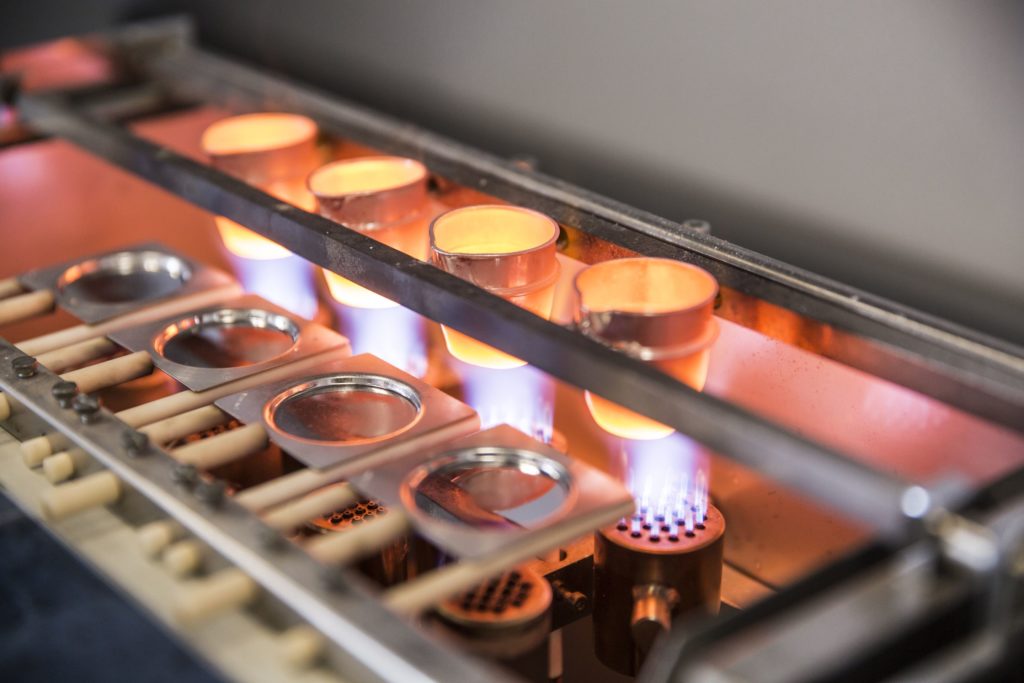
High-pressure Experimental Laboratory
Image gallery
Description
This service offers the possibility of investigating conditions prevailing in the interior of the Earth’s crust and mantle with particular applications to phase equilibria determinations, fluid transfer, and mineral stability. The composition and origin of magmas at depth, the source region in the mantle and crust, and the crystallization conditions of magmas below active volcanoes, are among the many possible applications of this service.
The laboratory is equipped with two presses (Boyd-England design) of the type internally-heated pressure vessel, commonly called “piston-cylinder apparatus”. The technique consists of a tungsten carbide core, or cylinder, in which the experimental cell is pressurized to a maximum of 4.0 GPa by the action of a hydraulic ram acting over a tungsten carbide piston. The cell is heated, up to a maximum of 1500 °C, by an electrical current passing through a graphite furnace that allocates the sample. Electronic temperature programmers are used to set heating conditions. Oil pressure meters and cooling units complete the apparatus. Cells, containing the graphite furnace, the sample capsule and thermal–electric insulators are designed depending on particular settings and objectives. Samples of up to 4 mm length and 3 mm diameter can be allocated within cells of ½” and 10 mm diameter. Duration of experimental runs may vary from several hours to weeks depending on the objectives.
Scientific advisor: Antonio Acosta Vigil


